Thermo-iono-electronic materials and microstructure analysis
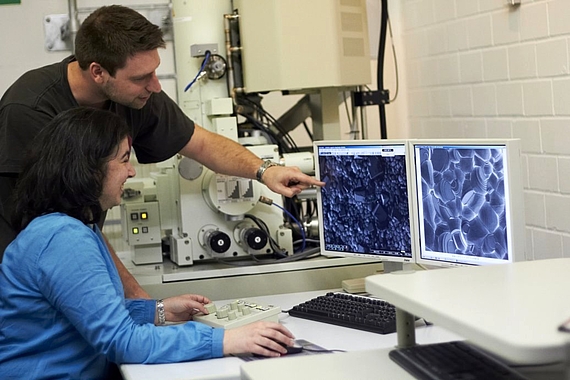
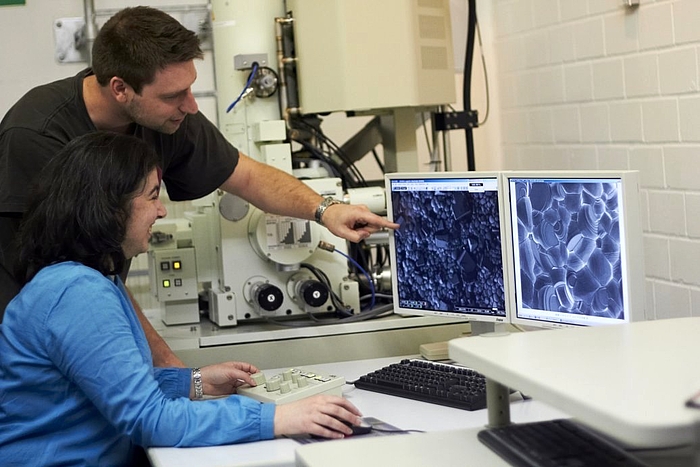
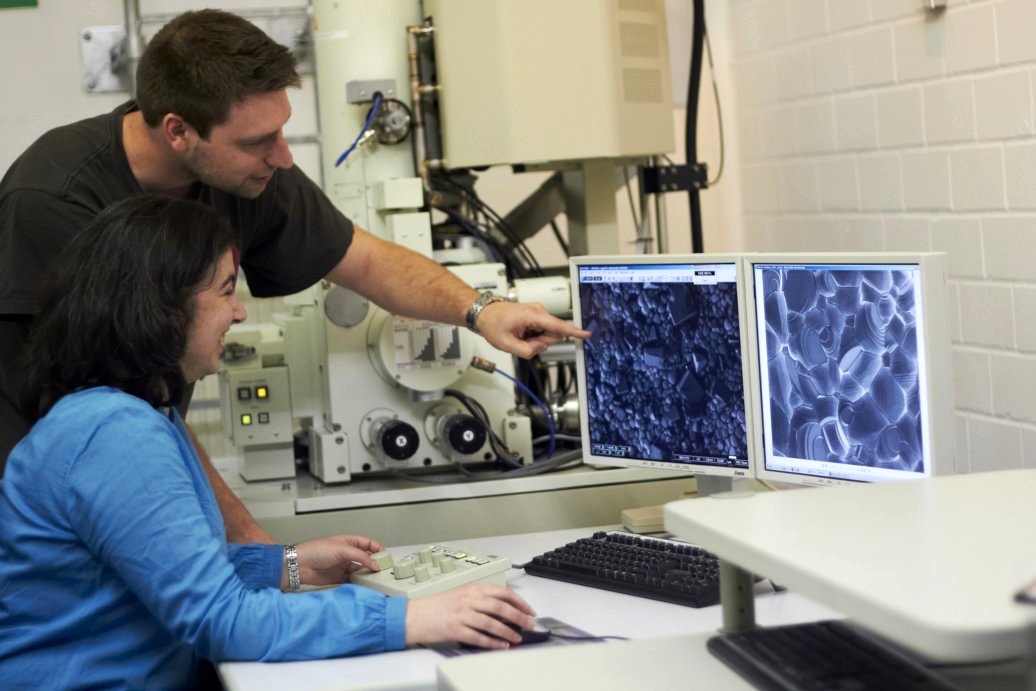
Thermo-iono-electronic (TIE) materials comprise all solids, which conduct entropy, ions or electrons, when exposed to respective thermodynamic potential gradients. Then, the TIE materials also conduct heat, electrochemical energy and electrical energy. This allows realize energy conversion, energy storage or chemical separation.
The real structure of TIE materials is investigated by X-ray diffractometry (XRD) with refinement methods (Pawley, Rietveld) as well as field-emission scanning electron microscopy (FE-SEM) and field emission transmission electron microscopy (FE-TEM).
Transmission electron microscopy (TEM) is powerful by combining a variety of advanced physical-chemical methods for material characterization. In the reciprocal space, selected area electron diffraction (SAED) and convergent beam electron diffraction (CBED) are applied. Verfügung. The phase contrast used in high-resolution TEM (HRTEM) allows direct imaging of crystal lattices at near-atomic resolution.
In the high-angular annular dark field (HAADF) the scanning TEM (STEM), contrast is approximately proportional to the atomic number (Z contrast). For local chemical analysis, not only energy-dispersive X-ray spectroscopy (EDXS), but also energy-filtered TEM (EFTEM) and electron energy-loss spectroscopy (EELS).
Thermoelectric Energy Harvesting
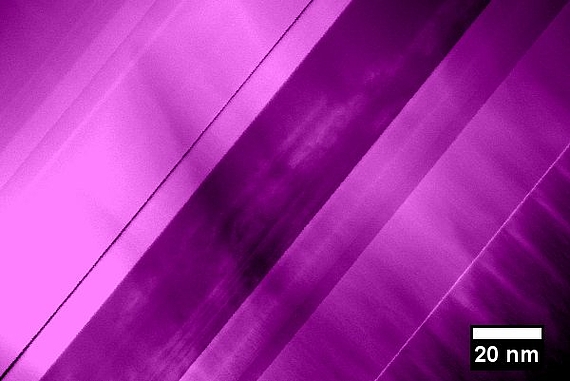
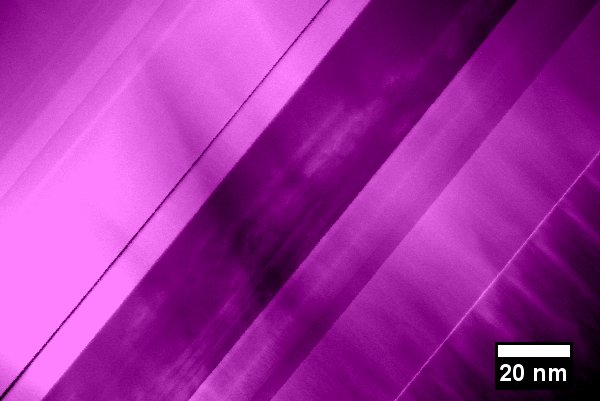

Thermoelectric energy harvesting relies on the thermal induction of an electrical current (Seebeck effect). The task is to find and improve materials in which the flux of entropy not coupling on an electrical current is weak, but the electron flux strongly couples on entropy.
Nanostructuring of materials is a promising approach to diminish the free propagation of elastic waves, which are the principal carriers of the entropy current not coupling on an electrical current. The aim is to establish nanostructures, which do not hinder the electrons to propagate, but effectively scatter the elastic waves.
We investigate oxide-based thermoelectric nanomaterials with high power factor, high figure-of-merit and excellent high-temperature stability.
We synthesise materials, characterize their microstructure and functional properties and tailor them to be used in prototype thermogenerators.
Mixed conducting oxides for gas separation membranes
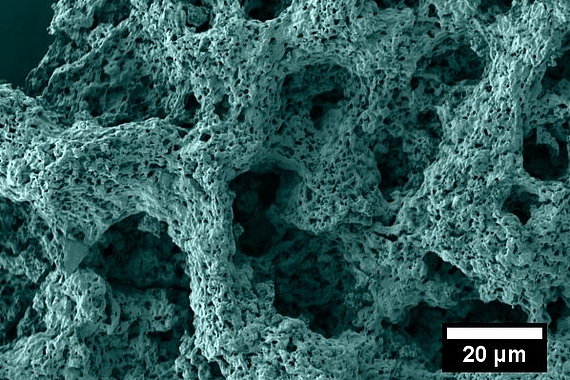
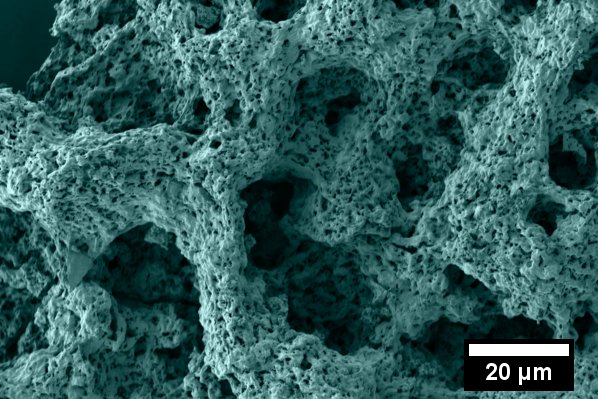

In a chemical potential gradient of ions, which are mobile in a solid, the mixed ionic-electronic conductor (MIEC) can become selectively permeable for these mobile ions.
The thermally activated ambipolar diffusion of ions and electrons in a solid can be used to realise membranes for gas separation. These membranes work without the need of external electrodes.
Our particular interest is in complex oxides and to tailor them to be applied as membranes for separation of oxygen or hydrogen from gas mixtures.
The application requires not only a high oxygen permeability, but the membrane material must be stable under both oxidizing and reducing conditions. Often also a high chemical stability in harsh environment is demanded.
Contact
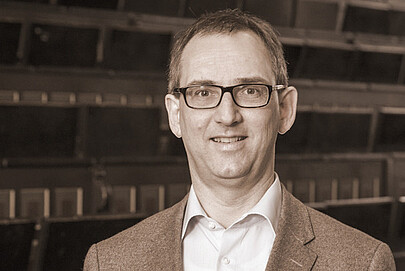
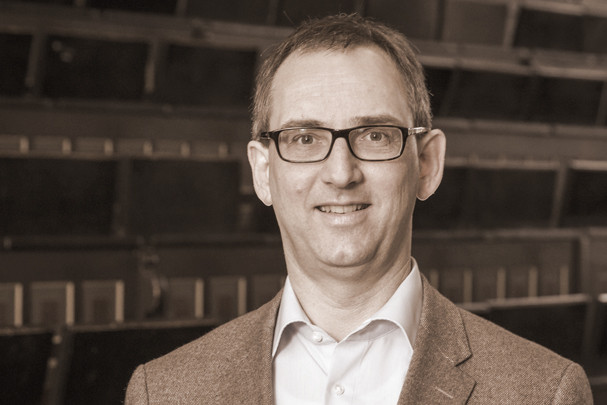
30167 Hannover




